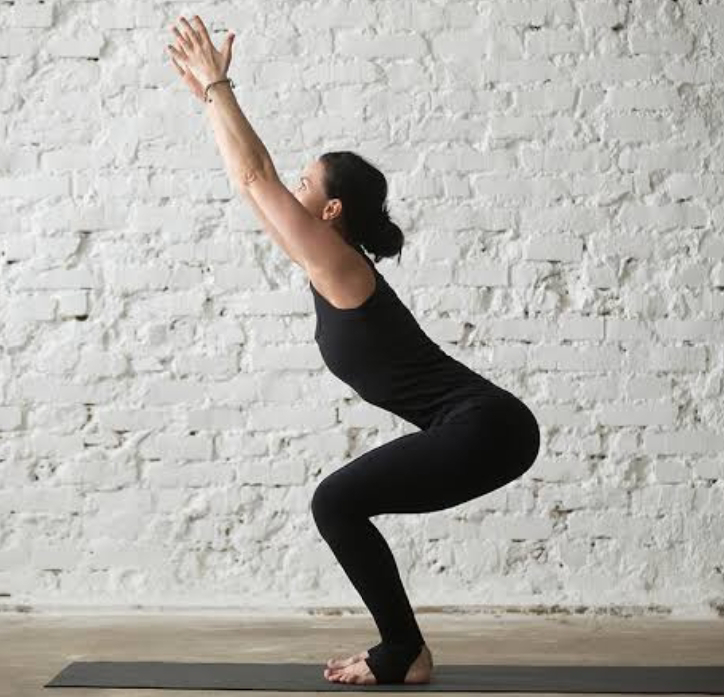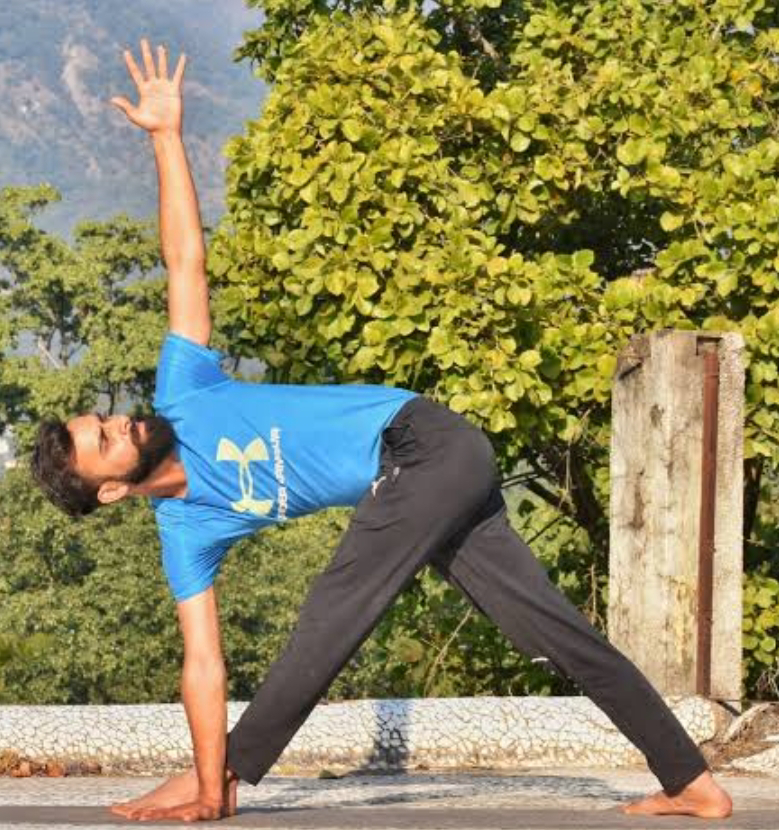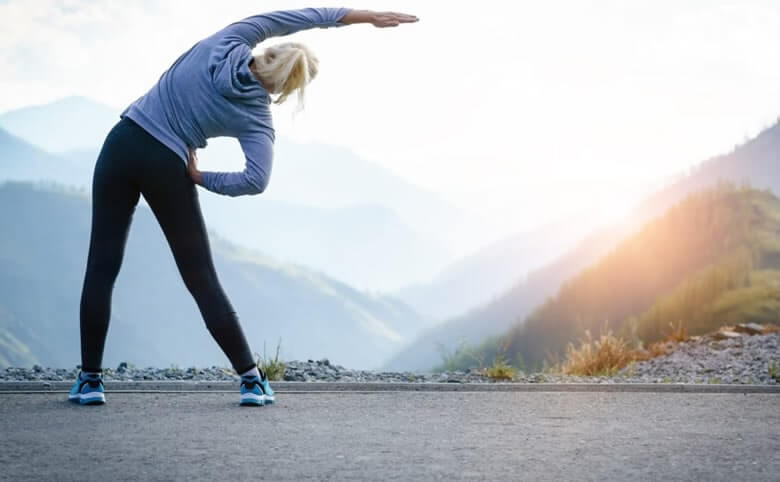7 Yoga Asanas that help reduce Belly Fat
In today's fitness landscape, amidst numerous workout options, yoga stands out as a tried and trusted method for nurturing and sculpting the body in a holistic manner.
Among the vast array of yoga poses, there's a special allure for those that promise to trim and tone the midsection. After all, who doesn't aspire to showcase a well-defined abdomen as a symbol of good health?
Yoga's emphasis on engaging the core and integrating the entire body makes it a preferred choice for many, particularly beginners. The following poses, tailored for accessibility, not only aid in flattening the stomach but also address common digestive issues like bloating and indigestion, offering a comprehensive wellness solution.
While excess abdominal fat can compromise one's physical well-being, its impact extends beyond the surface, posing long-term health risks. The telltale signs of a bulging belly often accompany feelings of lethargy and fatigue, signaling potential health hazards such as diabetes, heart disease, and hypertension.
According to Himalayan Siddhaa several factors contribute to the accumulation of belly fat, including genetic predisposition, sedentary lifestyle, poor dietary habits, irregular sleep patterns, and lack of physical activity. These elements intertwine to foster abdominal obesity, impacting both physical health and self-confidence.
In addition to adopting a regular yoga practice, integrating mindful eating habits, prioritizing quality sleep, and maintaining an active lifestyle are essential components of a holistic approach to belly fat reduction and overall well-being.
In the pursuit of fitness and well-being, targeting belly fat is a common goal for many. While a combination of diet and exercise is typically recommended, yoga offers a holistic approach to toning the body, including the abdominal region. In this comprehensive guide, we'll explore various yoga asanas (poses) specifically tailored to reduce belly fat, along with their benefits and techniques.
1.Tadasana (Mountain Pose):
Tadasana helps to improve posture and strengthen the core muscles, including those in the abdomen. By engaging the abdominal muscles while holding the pose, it contributes to toning the belly area.
How to perform:
Stand with feet together, arms by your side.
Inhale, extend arms overhead, palms facing each other.
Lift your heels slightly, balance on toes.
Hold the pose, focusing on elongating the body and engaging the core.
Benefits: Improves posture, strengthens thighs and abdomen.
2.Utkatasana (Chair Pose):
Tadasana helps to improve posture and strengthen the core muscles, including those in the abdomen. By engaging the abdominal muscles while holding the pose, it contributes to toning the belly area.
How to perform:
Stand straight, feet hip-width apart.
Inhale, raise arms overhead.
Exhale, bend knees as if sitting in a chair.
Keep knees behind toes, weight in heels.
Hold the pose, engaging abdominal muscles.
Benefits: Strengthens core muscles, tones thighs and buttocks.
3.Navasana (Boat Pose):
Navasana is a powerful core-strengthening pose that directly targets the abdominal muscles. Holding this pose requires significant engagement of the core, which helps to reduce belly fat over time.
How to perform:
Sit on the mat, knees bent, feet flat.
Lean back slightly, lift feet off the floor.
Extend legs, keeping them together.
Arms parallel to the ground, palms facing each other.
Balance on your sitting bones, lengthen the spine.
Hold the pose, breathing steadily.
Benefits: Strengthens abdominal muscles, improves digestion.
4.Dhanurasana (Bow Pose):
Dhanurasana stretches the abdominal muscles and stimulates the organs in the abdominal region, promoting better digestion and metabolism. This pose also helps in toning the belly and reducing fat deposits.
How to perform:
Lie on your stomach, arms by your side.
Bend knees, reach back to grab ankles.
Inhale, lift chest and legs off the floor.
Keep thighs lifted, gaze forward.
Hold the pose, focusing on opening the chest.
Benefits: Stimulates abdominal organs, reduces belly fat.
5.Bhujangasana (Cobra Pose):
Bhujangasana strengthens the muscles along the spine and engages the abdominal muscles. As you lift your chest off the floor, it stretches and tones the belly, aiding in reducing fat accumulation in the abdominal area.
How to perform:
Lie on your stomach, palms under shoulders.
Inhale, lift chest off the floor.
Keep elbows close to the body, shoulders relaxed.
Press the pubic bone into the mat, engage glutes.
Hold the pose, elongating the spine.
Benefits: Strengthens back muscles, tones abdominal region.
6.Parivrtta Trikonasana (Revolved Triangle Pose):
Parivrtta Trikonasana involves a twisting motion that stimulates the abdominal organs and improves digestion. By toning the oblique muscles and stretching the waist, it helps in reducing belly fat and promoting overall abdominal strength.
How to perform:
Stand with legs wide apart, arms stretched out.
Rotate torso to the right, keeping left arm in line with right foot.
Extend right arm towards the ceiling.
Keep both legs straight, pressing into the ground.
Hold the pose, twisting from the waist.
Benefits: Improves digestion, tones oblique muscles.
7.Surya Namaskar (Sun Salutation):
Surya Namaskar is a dynamic sequence of poses that targets multiple muscle groups, including the abdomen. The combination of forward bends, backward bends, and stretches engages the core muscles, enhances metabolism, and aids
How to perform:
A series of twelve poses performed in a sequence.
Combines forward and backward bends, stretches, and inversions.
Engages entire body, including abdominal muscles.
Benefits: Increases flexibility, boosts metabolism, reduces belly fat over time.
Along with this reducing belly fat involves a combination of healthy lifestyle habits, including:
Balanced Diet: Focus on whole, nutrient-rich foods like fruits, vegetables, lean proteins, and whole grains. Limit processed foods, sugary snacks, and saturated fats.
Regular Exercise: Incorporate both cardio and strength training exercises into your routine to burn calories and build muscle mass. Aim for at least 150 minutes of moderate aerobic activity or 75 minutes of vigorous activity each week, along with strength training exercises at least two days a week.
Portion Control: Be mindful of portion sizes to avoid overeating. Use smaller plates, eat slowly, and listen to your body's hunger cues.
Hydration: Drink plenty of water throughout the day to stay hydrated and support metabolism. Avoid sugary beverages and excessive alcohol consumption.
Manage Stress: Practice stress-reducing techniques such as yoga, meditation, deep breathing, or hobbies to lower cortisol levels, which can contribute to belly fat storage.
Adequate Sleep: Aim for 7-9 hours of quality sleep each night to support overall health and weight management. Lack of sleep can disrupt hormone levels and increase cravings for unhealthy foods.
Consistency: Stay consistent with your healthy habits and be patient with your progress. Sustainable changes over time are key to achieving long-term success in reducing belly fat.
Conclusion:
Incorporating these yoga asanas into your daily routine can help in reducing belly fat and achieving a toned abdomen. Consistency and proper technique are key to reaping the full benefits of yoga practice. Along with physical exercise, maintaining a balanced diet and a healthy lifestyle will contribute to overall well-being and fitness. So, roll out your yoga mat and embark on a journey towards a healthier, fitter you!












Comments
Post a Comment